Zachary Zolondek
Advisor: Neil Minuk
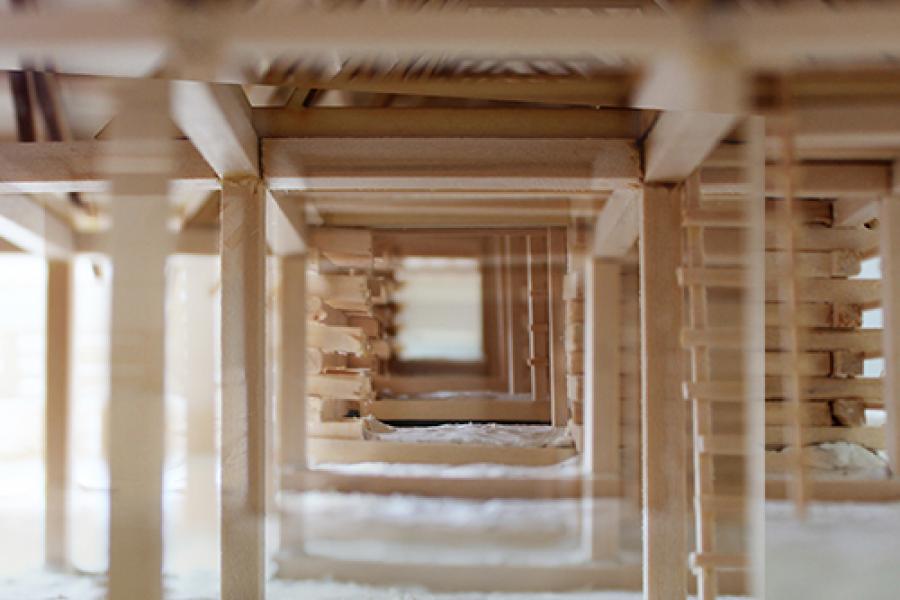
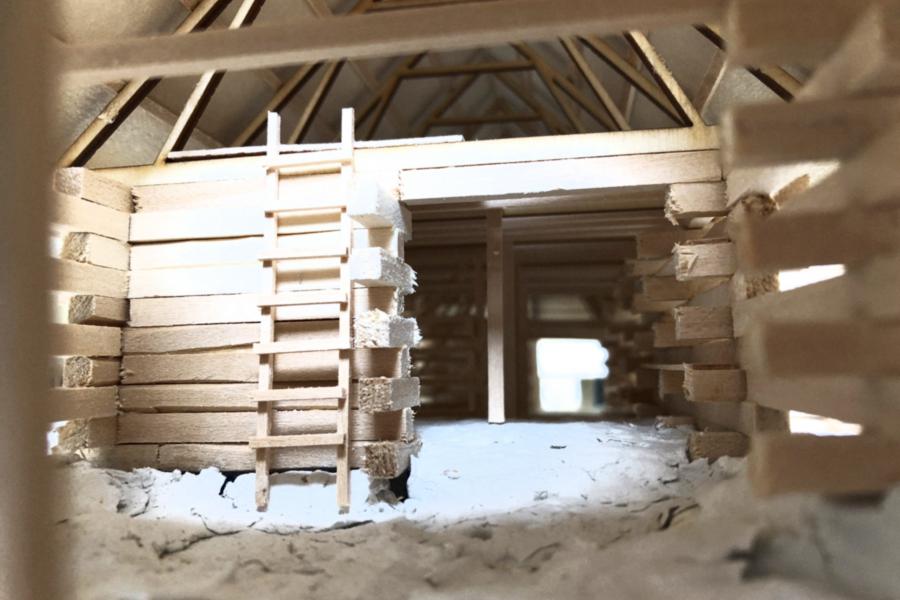
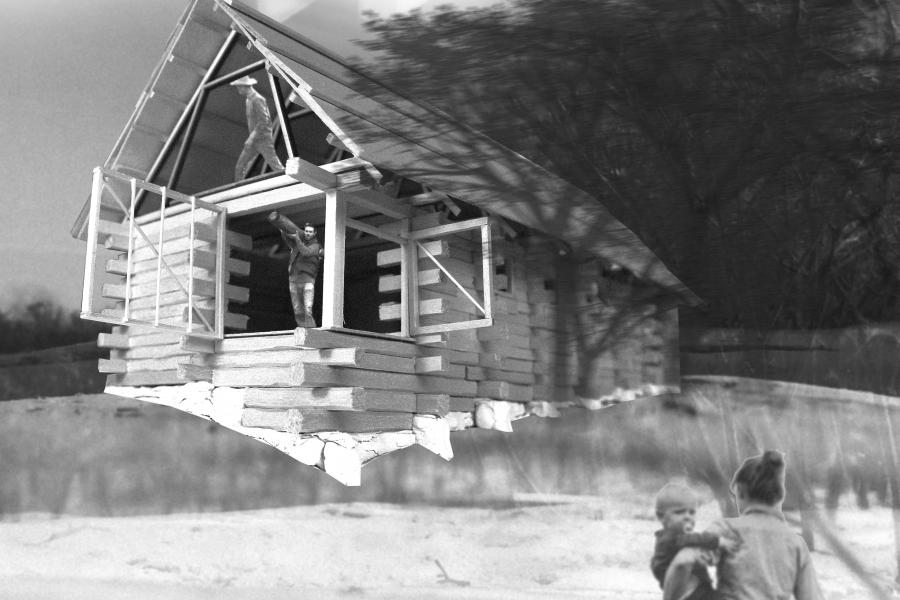
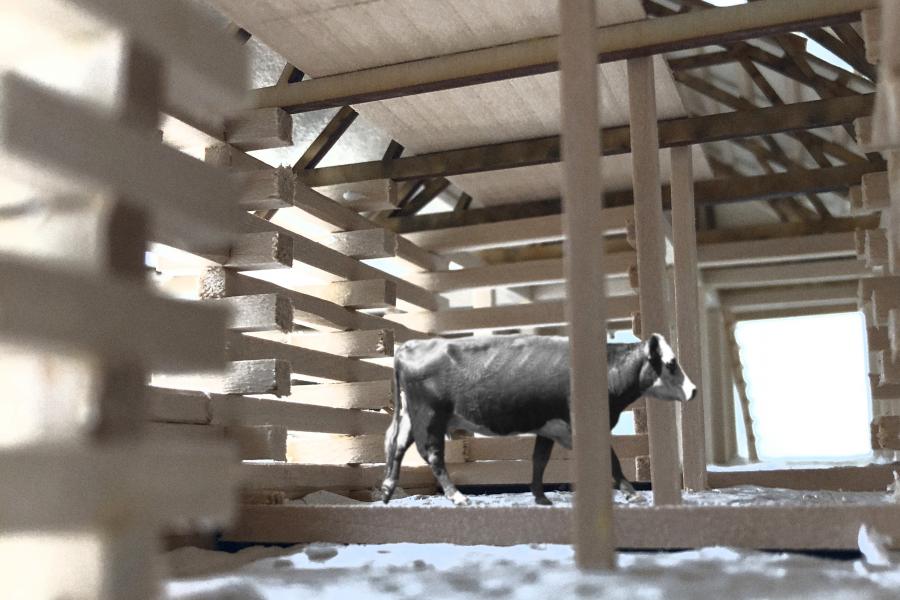
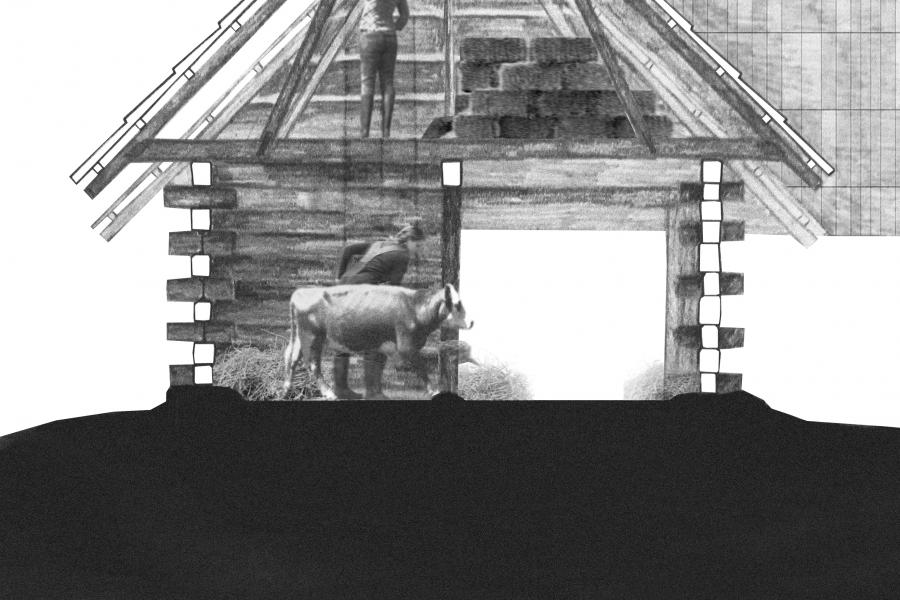
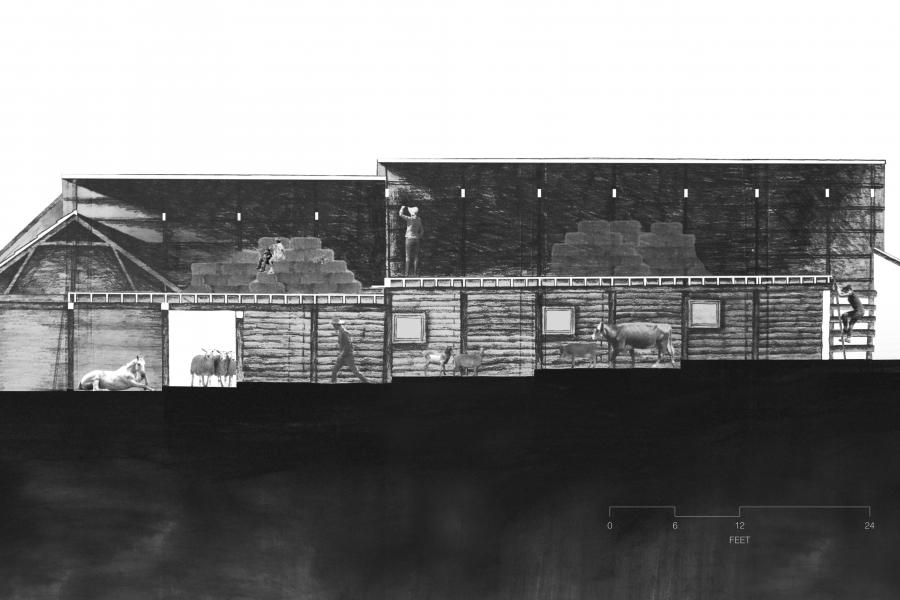
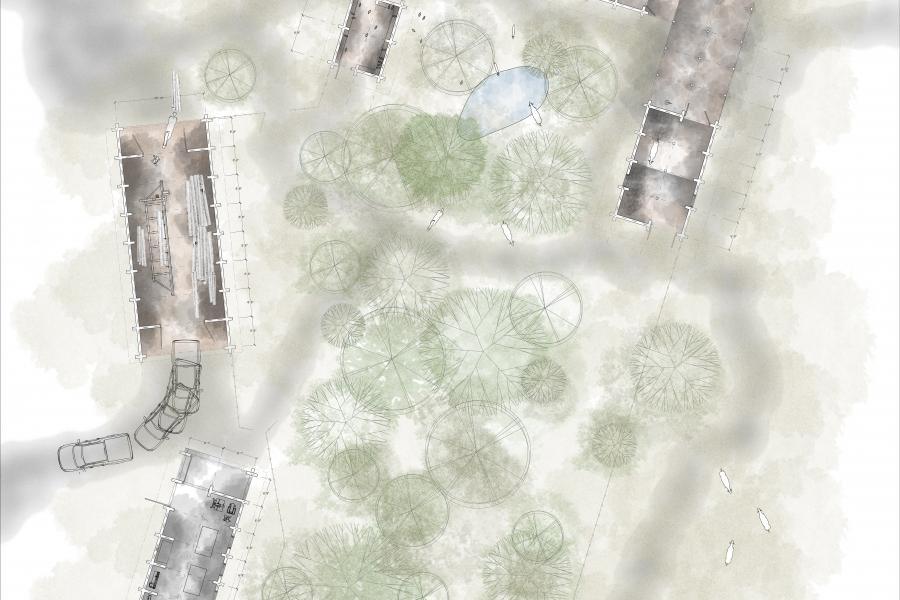
Homestead: Enacting a Return
My project has been inspired by the spatial qualities and constructions of the first-generation Ukrainian homesteaders in Manitoba. The central and driving question has been how to revive or realize this traditional and vernacular architecture from a specific cultural context in the contemporary world? This elicits additional questions such as; what qualities of the traditional vernacular should be embodied in a new architecture, and how can these qualities be applied to contemporary spatial conditions, desires and realities? What is at stake in this endeavour is the ability of the architecture and its representation to embody the meaningful and quintessential qualities of Ukrainian homestead architecture. The first generation of European settlers, in their journey to the new world of open space, arrived on the prairies of western Canada and met a harsh, unforgiving land. The shared struggle and hardship the settler families endured together formed the foundation of a strong and healthy community rooted in shared experience, ritual, history and relationship with the land. The destruction of the family homestead brought on by advancing industrialization of farming practices, and society as a whole, has rid the rural landscape of this self-sufficient way of life. Contemporary culture appears to be barreling toward making things faster, easier and the same.
Western society continues to embrace technological progress that further separates
people from real, tangible and consequential experiences. The project will seek to discover how a contemporary homestead supporting multiple families would exist on the prairie landscape. The architectural question will seek to answer how this type of rural settlement can be arranged in a way that harmonizes all aspects of rural life such as spiritual nourishment, tending to animals, growing food as well as maintaining cultural craft and tradition into a layered architectural experience that enables a culture rooted in self-sufficiency. Drawing on personal perceptions of cultural loss experienced by the descendants of the original settlers of the prairie, and the broad notion that the contemporary architectural establishment no longer wishes to perpetuate an architectural tradition. Rather, the ‘re’ remains pervasive. Rethink, reimagine and reinterpret appear to be the lens through which many architectural projects are framed within. The imagined families in this project wishing to engage and enact a return to the homestead life are descendants of Ukrainian settlers, wishing to make meaningful connections to their past, setting the roots of a new tradition they wish to perpetuate.
Through tactile, textured and dynamic collages of models and drawings, the onlooker is brought to the rural site and witnesses the act of construction. The project is pursuing a way of representing an architectural enactment and experience that privileges human perception and scale. The humble architecture and daily life of the prairie settler has not been represented in this way. Through representing these architectural enactments, informed by thresholds of privacy, landscape and pressing practical needs of shelter and dwelling, it is intended that a homestead that embodies and venerates the qualities and history of the original settlers, not reimagines or reinterprets, will emerge through representation and constructions that the onlooker becomes immersed in.
